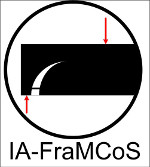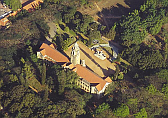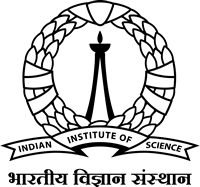


Many conferences include discussions of damage, cracking and fracture of concrete, but mostly outside the context of fracture mechanics. Other conferences cover the subject of fracture mechanics, but rarely focused on its application to concrete and concrete structures. IA-FraMCoS was founded to help fill this gap.
Concrete is an archetypical quasibrittle material. It consists of brittle constituents and is characterized by a non-negligible material characteristic length, which endows the material with a behavior that is transitional between the stress-strain relations for distributed damage at small scales and linear elastic fracture mechanics at large scales. This transitional behavior poses difficult challenges for theoretical, experimental and computational research.
Originally, IA-FraMCoS only activity was the triennial conference series with focus on concrete. Presently, it seeks to expand its activities to cover not only fundamental developments in concrete but also promotion of fracture-based approaches in engineering practice.
This will be accomplished through the perennial conferences and endorsements of high quality scientific research.
Previous FraMCoS conferences: 2019 Bayonne (France), 2016 Berkeley (USA), 2013 Toledo (Spain), 2010 Jeju (Korea), 2007 Catania (Italy), 2004 Vail (USA), 2001 Cachan (France), 1998 Gifu (Japan), 1995 Zürich (Switzerland), 1992 Breckenridge (USA)
Honorary President: Zdenek P. Bazant
Carmen Andrade |
Xiaozhi Hu |
Giovanni Plizzari |
Nemkumar Banthia |
Mija Hubler |
Marco di Prisco |
Sudhir Barai |
Tony Jefferson |
Frederic Ragueneau |
Joaquim Barros |
Minoru Kunieda |
G Appa Rao |
Zdenek Bazant |
Christian La Borderie |
Jan Rots |
Tulio Bittencourt |
Bhushan Karihaloo |
Gonzalo Ruiz |
John Bolander |
Eric Landis |
Jacqueline Saliba |
Rene de Borst |
Christopher Leung |
Beatriz Sanz |
Ignacio Carol |
Victor Li |
Victor Saouma |
Alberto Carpinteri |
Jacky Mazars |
Surendra P. Shah |
Jan Cervenka |
Viktor Mechtcherine |
Volker Slowik |
Eleni Chatzi |
Hirozo Mihashi |
Kolluru Subramaniam |
Gianluca Cusatis |
B. H. Oh |
Franz-Josef Ulm |
Giuseppe Ferro |
Masayasu Ohtsu |
Gideon P.A.G. van Zijl |
Stephen Foster |
Claudia Ostertag |
Kasper Willam |
Ravindra Gettu |
Josko Ozbolt |
Shilang Xu |
| Peter Grassl | Anna Pandolfi |
Conference Venue
The conference will be held at the J N Tata Auditorium, National Science Seminar Complex, Indian Institute of Science, Bangalore. The complex is located on the southern side of the campus, set in an serene atmosphere, ideal for scientific sessions. The complex is fully air-conditioned and houses the main auditorium with three seminar halls for parallel sessions. The lower foyer provides excellent office space and the upper foyer is suitable for exhibits and commercial stalls.
About Bangalore:
India's pride, Bangalore is nearly 500 years old and has grown from a small time settlement when Kempe Gowda, the architect of Bangalore, built a mud fort in 1537. Today Bangalore has grown into a sprawling metropolis of more than 10 million people and is referred to as the Silicon Valley of India - accounting for more than 40 percent of India's software exports. Bangalore's temperate climate, high quality educational, scientific and technology institutions coupled with a thriving IT and Bio-Technology and manufacturing industry makes Bangalore one of the most sought after global destinations.
Bangalore is well connected by road, rail and air to most major cities of the country. International airlines, such as Lufthansa, Air France, KLM, Cathay Pacific, Emirates, Etihad, Gulf Air, Japan Airlines, Kuwait Airways, Oman Air, Qatar Airways, Saudia, Air Arabia, Thai Airways, Malaysian Airlines, Air India, Singapore Airlines, British Airways, etc., fly directly to Bangalore.

J. M. Chandra Kishen
Ananth Ramaswamy
Sonalisa Ray
R. Vidyasagar